There are many kinds of windsurfing equipment and many ways to race with it, so windsurfers love to obsess about what type of racing is "best". Aside from the pure joy of obsessing, there is a practical purpose to the discussion. It is to insure fun, fair, and affordable competition for the target demographic of racers in the available wind conditions. Following is a review of the basic board types and classes of racing, starting with a rough evolutionary history.
In the beginning, the earliest windsurfing longboards gave rise to round-bottomed longboards that did great in light winds, and to all-around longboards, which had better planing performance. From planing longboards evolved shortboards intended for slalom racing in strong winds. As shortboards got more efficient, people realized that they could also be used for upwind-downwind course racing. The evolution of course-racing shortboards was towards shorter, wider shapes with long fins; today's "formula" boards. In the late 1990s, formula and longboard designs were combined to make "hybrid" boards. Another recent addition to board design, from the complete other end of the spectrum, was the introduction of the pure light-wind "Serenity" board.
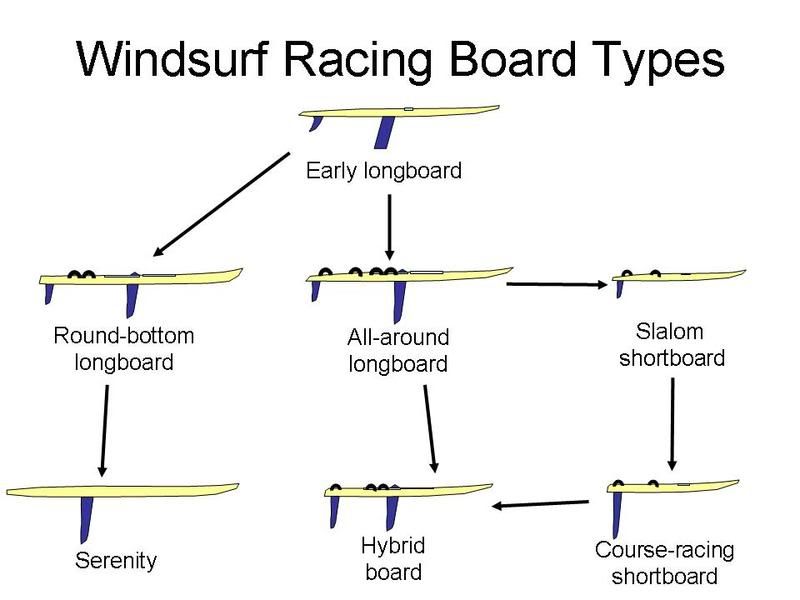
Here's a little more info and some pictures of each type of board:
The most popular early windsurf board, and maybe the most popular ever, was the "original windsurfer", a big, heavy longboard with wooden booms and a daggerboard that you had to slide out of a slot and sling over your shoulder when you weren't using it. There was a one-design racing class for the original windsurfer, which gradually allowed aluminum booms and a slightly more sophisticated sail and daggerboard. The 1984 Olympics were raced on a board similar to the original windsurfer. Original windsurfers are still semi-popular in Australia, but have pretty much been abandoned everywhere else.
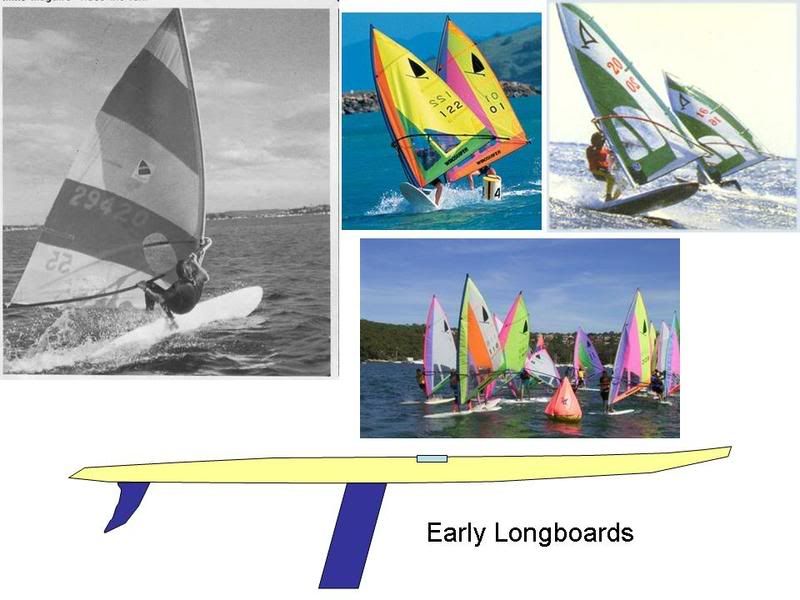
Another class of windsurfing that has pretty much been abandoned is "Division II" sailing on round-bottomed longboards. With their sailboat-shaped hulls, D2 boards did great in light wind course racing but were awkward to sail in serious wind. Serious wind is what they had in the 1988 and 1992 Olympics, where D2 boards were sailed. It was extremely rough on the competitors trying to maintain control.
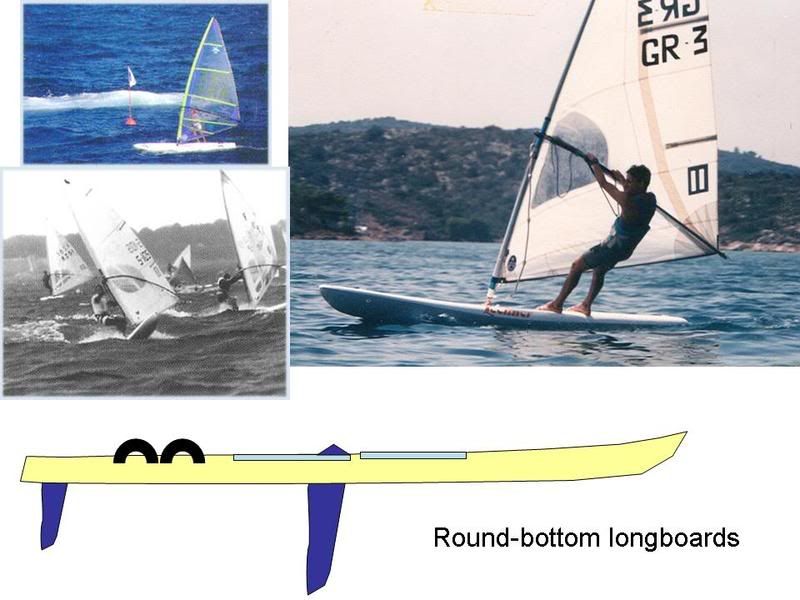
More refined longboards that did well in both light and strong winds were popular from the mid 1980s to the mid 1990s. They went through a lull in popularity when shortboards took over (and the overall sport of windsurfing declined), but all-around longboards are becoming popular again now. The 1996, 2000, and 2004 Olympics were raced on a good board for its time called the Mistral One-Design.
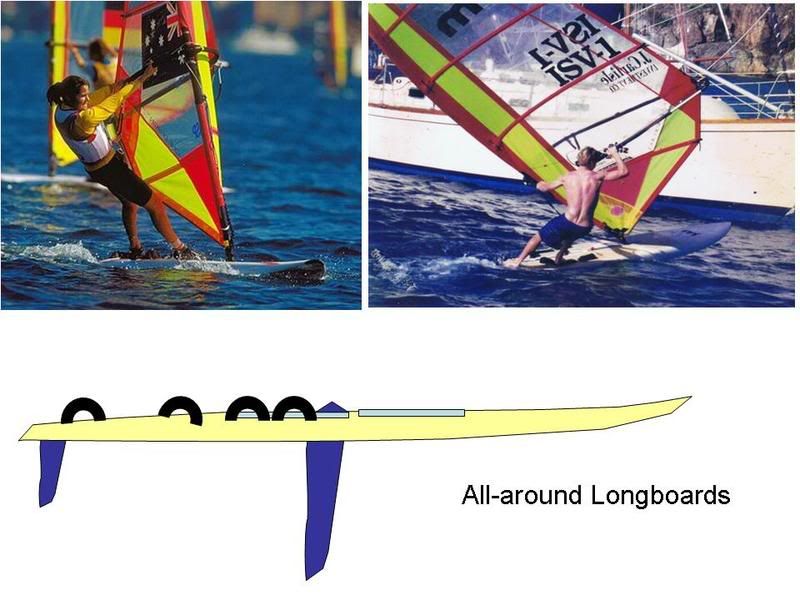
The idea behind hybrid boards was to make a board that would have a daggerboard and be long enough to get around a course well in light winds, but which would be wide enough and have a powerful enough fin to sail both upwind and downwind without the daggerboard once the wind reached the planing threshold. (Regular longboards didn't get a very good upwind angle when planing, so they had to use the daggerboard on the way upwind even in strong winds, which people thought was lame.) Hybrid boards became popular with the introduction of the Mistral Prodigy in the late 1990s. Prodigies were wide and easy to sail, so they had an appeal for beginners as well as aspiring racers. Another hybrid board, the Neil Pryde RS:X, was selected for the 2008 Olympics. The RS:X never caught on among recreational sailors, however, who were turning back towards more traditional longboards. Perhaps the most popular hybrid board class now is the Techno 293 OD class for youth racers. The board isn't very efficient in either light or strong winds, but it's cheap, fun, and easy to sail, and good training for kids who want to get into either longboard or formula racing later.
Female RS:X rider is Farrah Hall and the picture was taken by watersports photographer Shawn Davis.
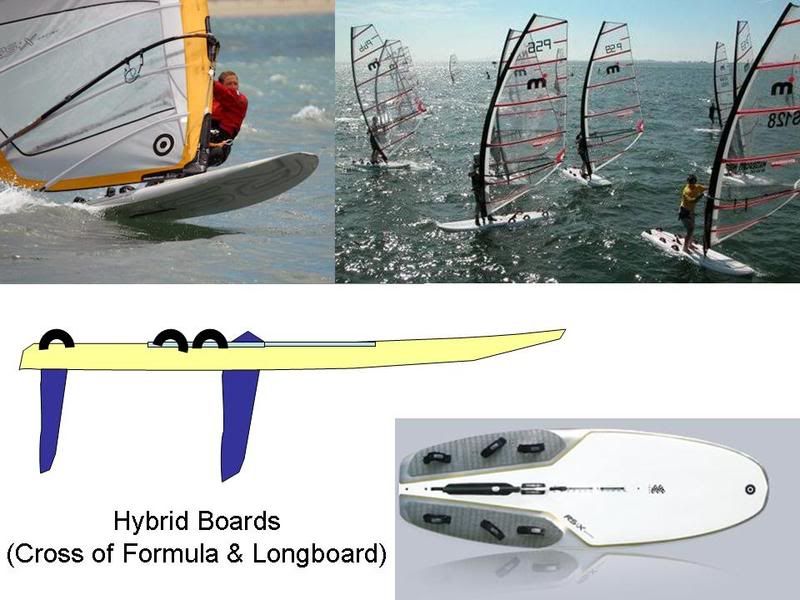
The first type of shortboard racing that was popular was downwind slalom, which is analogous to downhill skiing around flags. Boards for slalom are fast in strong winds and can turn pretty well, but are not designed to sail at steep upwind angles..
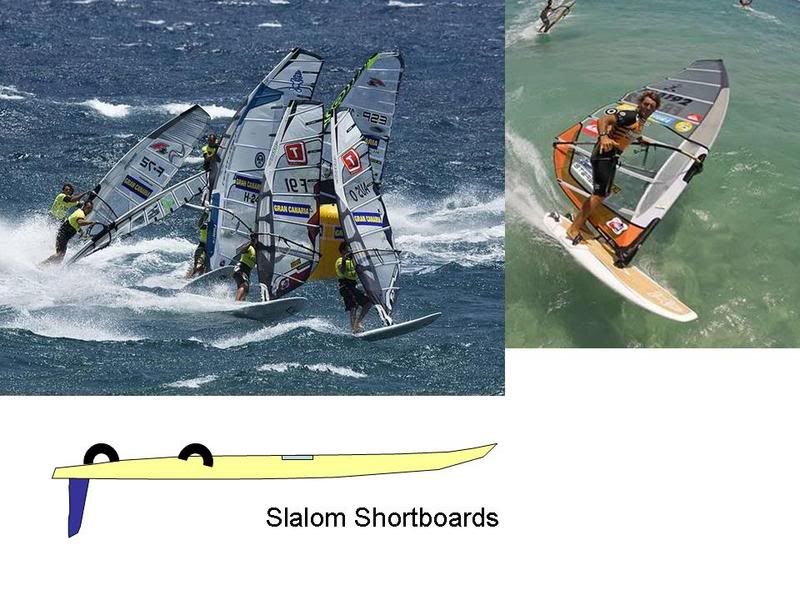

When people figured out how to make shortboards that went upwind well, there was a rapid evolution in shortboard design towards wide shapes with long fins. One class, called the "Formula" class, now dominates modern shortboard course racing. The rules of formula are that you can only have one board and three sails, and the max width of the board is 100 cm.
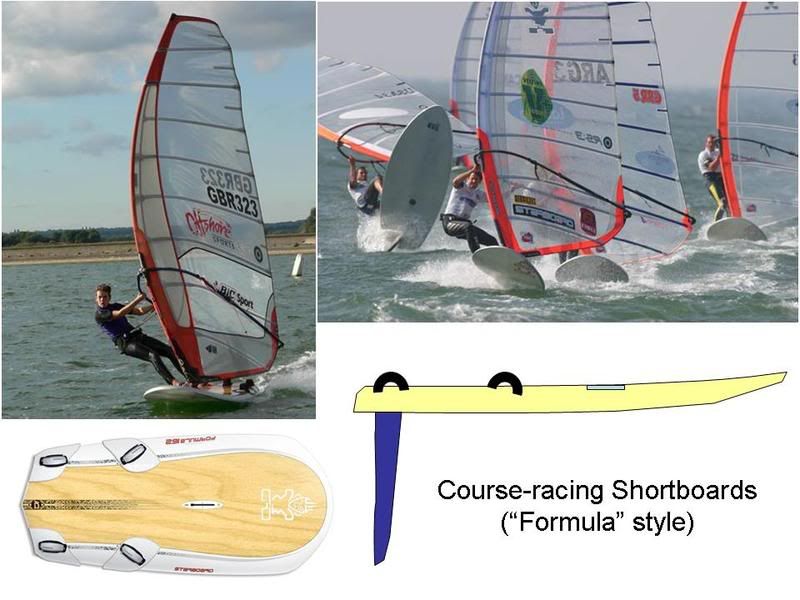
That last board design that I'm going to talk about is the "Serenity" a long, skinny, displacement hull made for extreme efficiency in light winds. It can go really fast when other boards would just be bogging along, but in stronger winds it reaches a speed limit of about 12 knots and can't go any faster than that because it can't get planing. Not much racing is currently done on Serenity's, but it is being talked about.
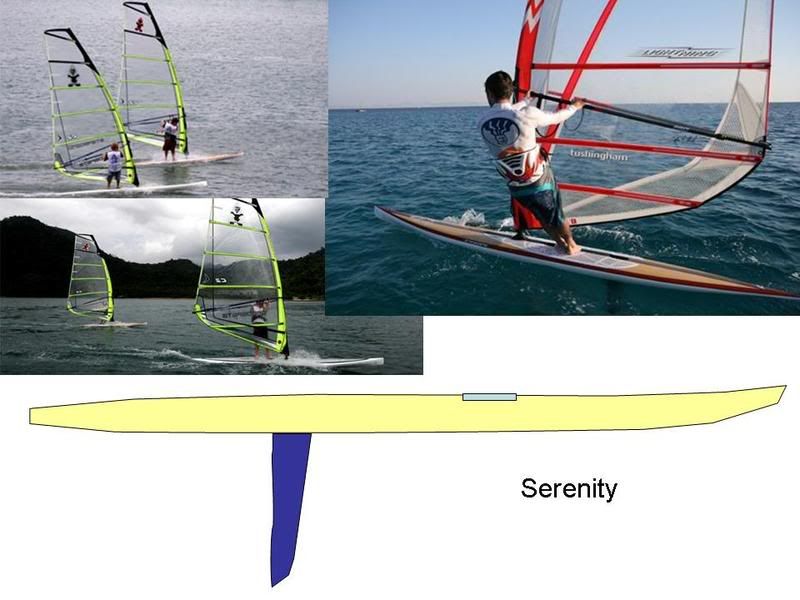
The next chart summarizes the optimal wind speeds for the different kinds of boards. Yellow means it's ok for racing, orange means it's good for racing, and red means it's AWESOME for racing. White doesn't necessarily mean it's impossible to sail a certain type of board in that wind; it just means that it's difficult or unfun, in my estimation.

Some classes of racing are open to boards and sails from any manufacturer, as long as the gear fits within certain rules about size, shape, number etc. These are called "Box Rules", and they help insure reasonably fair competition despite diverse equipment. Below are some open racing classes that are popular or have been popular.

One problem with open classes, though, is that the box rules can allow an "arms race" mentality to take over. The competition then ends up being more about who can afford the best custom equipment than about who is the best windsurfer. The common solution for that is "one design" racing, where everyone has to use the same equipment. The main problems with one designs are: 1) They get out-of-date and become "low performance" compared to what recreational windsurfers are using, 2) It can be hard to find others with the same one-design to race against, i.e. you need a critical mass, and 3) One-designs tend to favor a certain body weight, limiting the number of people who can be competitive at the highest levels to people of that weight.

The one-design class that I think is coolest is the Kona ONE. The rules of the class allow different sail sizes for different body weights, so the competitive weight range is not so limited. Also, the Kona is a really fun and easy board to sail in both light and strong winds. Plus, the Kona class is one of the only windsurfing classes that prohibits pumping the sail, aka "air rowing". That means you don't have to have marathon-runner fitness to be good.

4 comments:
James, you're a fucking encyclopedia, bro!
and for the record, I've actually had fun on a prodigy :)
James,
excellent work! thanks for taking the time to make this all clear. I bought an Exocet Pacer hybrid board for myself this year and have been having a blast on it.
I just wish there was racing on LI so I could see how good I am and so I could get better.
Keep up the good work!!
Nice work....I'm going to read the whole thing one Sunday morning soon over a long cup or two or three of coffee.
Very informative, thank you. It'll be interesting to see what Starboard comes up with as it tries to dethrone both the Bic OD and the RSX.
Post a Comment